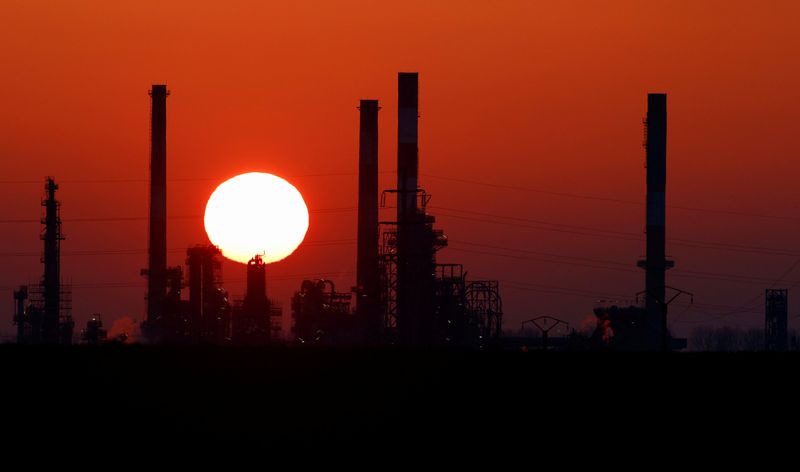By Robert Harvey
LONDON (Reuters) -Oil costs have been on observe to finish 2024 with a second consecutive yr of losses on Tuesday, however have been regular on the day as information displaying an enlargement in Chinese language manufacturing was balanced by Nigeria focusing on larger output subsequent yr.
futures fell by 7 cents, or 0.09%, to $73.92 a barrel as of 1306 GMT. U.S. West Texas Intermediate crude misplaced 4 cents, or 0.06%, to $70.95 a barrel.
At these ranges, Brent was down round 4% from its ultimate 2023 shut value of $77.04, whereas WTI was down round 1% from the place it settled on Dec. 29 final yr at $71.65.
In September, Brent futures closed under $70 a barrel for the primary time since December 2021, whereas their highest closing value of 2024 at $91.17 was additionally the bottom since 2021, because the impacts of a post-pandemic rebound in demand and value shocks from Russia’s 2022 invasion of Ukraine started to fade.
Oil costs are more likely to be constrained close to $70 a barrel in 2025 as weak demand from China and rising world provides are anticipated to solid a shadow on OPEC+-led efforts to shore up the market, a Reuters month-to-month ballot confirmed on Tuesday.
A weaker demand outlook in China specifically pressured each the Organisation of Petroleum Exporting Nations (OPEC) and the Worldwide Power Company (IEA) to chop their oil demand progress expectations for 2024 and 2025.
With non-OPEC provide additionally set to rise, the IEA sees the oil market going into 2025 in a state of surplus, even after OPEC and its allies delayed their plan to start out elevating output till April 2025 in opposition to a backdrop of falling costs.
Traders can even be watching the Federal Reserve’s fee minimize outlook for 2025 after central financial institution policymakers earlier this month projected a slower path as a consequence of stubbornly excessive inflation.
Decrease rates of interest usually incentivise borrowing and gasoline progress, which in flip is anticipated to spice up oil demand.
Markets are additionally gearing up for U.S. President-elect Donald Trump’s insurance policies round looser regulation, tax cuts, tariff hikes and tighter immigration, in addition to potential geopolitical shifts from Trump’s requires an instantaneous ceasefire within the Russia-Ukraine battle, in addition to the potential re-imposition of the so-called “maximum pressure” coverage in direction of Iran.

Costs have been supported on Tuesday by information displaying China’s manufacturing exercise expanded for a 3rd straight month in December however at a slower tempo, suggesting a blitz of contemporary stimulus helps to assist the world’s second-largest economic system.
Nevertheless, that was balanced out by potential for larger provide subsequent yr, as Nigeria stated it’s focusing on nationwide manufacturing of three million barrels per day (bpd) subsequent yr, up from its present stage of round 1.8 million bpd.




